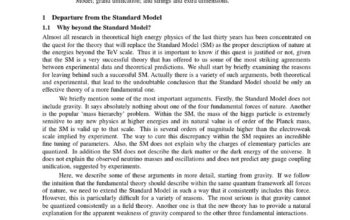Alpha Centauri, the quintessential neighbor in the cosmic neighborhood, beckons with the allure of the unknown and the tantalizing potential for discovery. A mere 4.37 light-years separate this stellar system from our own, positioning it as the closest known star system to Earth. Alpha Centauri is not a single star but a trio, comprising of Alpha Centauri A, Alpha Centauri B, and Proxima Centauri, the latter of which has garnered particular fascination due to its proximity and the recent confirmation of exoplanets lurking within its gravitational embrace.
Within the context of astronomical studies, Alpha Centauri represents a rare confluence of opportunity and challenge. The two larger stars, A and B, thrive in tandem as a binary pair, illuminating the dark void of space with their combined luminosity. This binary relationship conjures an image of a celestial duo waltzing through the cosmos, a physical manifestation of harmony and balance. In contrast, Proxima Centauri, a red dwarf star, stands somewhat apart, casting a slightly different hue on the interplay of gravitational forces within the system.
The characterization of these stars reveals a fascinating tapestry of stellar evolution, where Alpha Centauri A, a G-type main-sequence star, shares similarities with our own Sun, while Alpha Centauri B—classified as a K-type star—shines with a cooler, more subdued glimmer. Such distinctions in spectral classification elucidate the diversity of stellar phenomena and prompt inquiry into how these differences affect planetary formation and potential habitability.
Exploring the planetary systems orbiting these stars yields yet more excitement. Proxima Centauri’s exoplanet, Proxima Centauri b, is nestled within its star’s habitable zone, where conditions may permit the presence of liquid water—an essential ingredient for life as we know it. The prospect of extraterrestrial life in such proximity initiates a fervent exploration of astrobiological implications. Proxima b’s moderate mass positions it as a candidate for Earth-like characteristics, igniting the imagination regarding the possibilities of life forms that may inhabit its surface. The intersection of habitability and distance from Earth forms a tantalizing proposition: could this be humanity’s first step towards interstellar colonization?
Astrophysicists, equipped with advanced observational technologies, seek to unfurl the mysteries of this stellar system. The European Southern Observatory’s very large telescope has contributed immensely to the cataloging of Proxima Centauri b and its dynamic interaction with its host star. This discovery has led to novel discussions around the challenges of interstellar travel, with proposals for advanced spacecraft concepts that might one day harness the stellar winds of Alpha Centauri to propel us toward our cosmic neighbor.
Yet, the challenges facing interstellar endeavors are prodigious, not merely in terms of technological barriers but also the philosophical questions they pose. How does humanity envision its role in the greater cosmos? The endeavor to explore Alpha Centauri could be interpreted through the lens of a modern odyssey, akin to the age of exploration when seafaring nations ventured into the uncharted oceans. Such imaginings resonate deeply with the intrinsic human drive for discovery and understanding.
Moreover, the radiation environment surrounding Proxima Centauri b raises critical questions regarding long-term human habitation. The planet’s proximity to its host star subjects it to intense solar flares and X-ray radiation, making the prospect of future colonization not simply a matter of physical distance but rather a complex calculus of environmental viability. This harsh reality urges a reevaluation of what constitutes a hospitable environment and challenges assumptions about life’s resilience across the cosmos.
As we examine the broader implications of a potential expedition to Alpha Centauri, interstellar communication emerges as a formidable challenge. The vast distances involved necessitate innovative solutions to relay information back to Earth. Current technologies for deep-space communication, while advanced, would falter over the length of time required for messages to traverse such expansive astronomical distances. Consequently, the prospect of establishing a human presence in Alpha Centauri might also entail a paradigm shift in how we perceive and engage with space-time itself.
Another intriguing metaphor arises from the synthesis of scientific inquiry and the philosophical exploration of human existence in the universe. Alpha Centauri stands as not merely a distant point of light but as a mirror reflecting our aspirations and fears. The uncertainty that shrouds the potential for life on Proxima b compels us to confront our solitude in the vast expanse of space. Rather than viewing Alpha Centauri simply as a neighbor, it becomes a symbol of the collaborative spirit of scientific exploration—an illuminated beacon calling for collective human endeavor in the quest for knowledge.
In conclusion, the Alpha Centauri system captivates not only with its proximity but also with the promise of answers to profound questions regarding life beyond Earth. It juxtaposes the familiar against the unknown and stirs the imagination while instigating intellectual discourse on the future of humanity’s place in the universe. As we inch closer to adventurous pursuits across the expanse of space, Alpha Centauri transcends its role as a mere point in the night sky, emerging as a harbinger of possibilities yet to be unveiled—a testament to the indomitable human spirit’s quest for connection amidst the starlit solitude of the cosmos.












